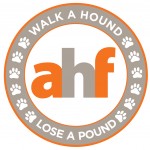February is Responsible Dog Owners Month-Whole Dog Journal Tips and Rescouces
| Being a responsible pet owner is not an easy task. It takes a lot of time and effort to make sure your furry family members are well taken care of and happy. We’d like to share some of our favorite tips for keeping your dog save and healthy: |
| • ID at All Times – The one certain thing in life is unpredictability. Hurricanes, earthquakes, fires, power outages, sudden illness, car crashes – any number of things can separate you from your beloved pal. Make sure he’s always wearing ID (with current contact numbers) and is microchipped. And regularly check the ring or rivets fastening the tag to his collar. For more on collars and leashes, purchase Whole Dog Journal’s ebook Guide to Collars and Leashes. |
| • Train Every Day (If Only For a Minute) – Dogs are hardwired to live in an orderly and cooperative “pack” environment. You can easily and peacefully underline your role – and your dog’s role – in the household by asking him to perform a few simple behaviors (sit, come, down), and rewarding him when he complies. This daily exercise reminds him that you are the leader. For more on training your dog in a positive way, purchase Whole Dog Journal’s ebook Positive Training Basics. |
| • Keep Them Slim, Keep Them Moving – There’s no doubt about it: Fat dogs are more prone to injury, illness, and mobility issues than their slimmer compatriots. Studies have shown that, on average, dogs who are slightly underweight live longer than overweight dogs. More food is not more love, no matter what your dog says. If you really love him, you will keep him slender. For more on weight control and fitness, purchase Whole Dog Journal’s ebook Weight and Fitness Handbook. |
AHF Walk a Hound, Lose a Pound – March 30, 2014 – JOIN US
 REGISTER for the Animal Health Foundation walk at the Irvine Regional Park in Orange, CA and enjoy vendors, disc dog demos, agility demos, silent auction, raffle prizes, goody bags and more!
REGISTER for the Animal Health Foundation walk at the Irvine Regional Park in Orange, CA and enjoy vendors, disc dog demos, agility demos, silent auction, raffle prizes, goody bags and more!
All funds raised will help the AHF improve the health and welfare of pets through our veterinary care assistance, disaster relief, pet partner and wildlife in need programs!
Go to www.ahfwalk.org to register and for information
Thanks to our sponsors:
Frontline Plus VPI Pet Insurance VCA All-Care
Mark the NEW Date for AHF Dog Walk
Pets and owners can shape up together
 Exercise is good for pets and people. Dog owners reap such benefits as better heart health and lower stress levels. In places such as Mississippi, where dog longevity is particularly low, according to the Banfield Pet Hospitals 2013 State of Pet Health survey, people are encouraged to get active with their pets. Veterinarian Troy Majure recommends that owners and pets engage in at least a half-hour of activity each day, and with dog-friendly exercise classes and gyms popping up, owners and their furry friends have many options. The Clarion-Ledger (Jackson, Miss.) (tiered subscription model) (5/31)
Exercise is good for pets and people. Dog owners reap such benefits as better heart health and lower stress levels. In places such as Mississippi, where dog longevity is particularly low, according to the Banfield Pet Hospitals 2013 State of Pet Health survey, people are encouraged to get active with their pets. Veterinarian Troy Majure recommends that owners and pets engage in at least a half-hour of activity each day, and with dog-friendly exercise classes and gyms popping up, owners and their furry friends have many options. The Clarion-Ledger (Jackson, Miss.) (tiered subscription model) (5/31)
urns out, man’s best friend also can be man’s best fitness buddy.
In Mississippi, where pet longevity is among the lowest in the nation, a neighborhood stroll or a Frisbee toss can prove beneficial for both dog and master.
In the 2013 State of Pet Health survey compiled by Banfield Pet Hospitals, a national pet hospital chain with locations in PetSmart stores in Jackson, Flowood and Gulfport, dogs in Mississippi have the shortest average life span in the nation, with Alabama and Louisiana coming in second and third, respectively.
The survey took in 7,354 dogs and 913 cats in Mississippi. The results are based on spay and neuter rates, incidents of pet disease such as obesity and arthritis and other environmental factors.
Troy Majure, a Jackson veterinarian and co-host of Mississippi Public Broadcasting’s “Creature Comforts” pet talk show, suggests pet owners aim for at least 30 minutes of exercise daily while keeping their four-legged friend — and themselves — hydrated.
“I do believe my clients are more aware of obesity than they were 10 years ago,” Majure said. “You don’t want to do too much too quickly, but steady improvement will help as far as exercise.”
Owning a pet, especially a dog, seems to have heart health benefits, according to the American Heart Association. Dog owners are 54 percent more likely than other adults to get recommended levels of exercise. In addition, a pet can lower stress, and pet ownership is associated with lower blood pressure and cholesterol levels and less obesity. Some dog owners get in two-a-day workouts because they don’t consider taking their dog out as exercise, so they still workout on their own time.
Other dog owners have gone beyond the neighborhood stroll, enrolling themselves and their dogs in group fitness classes with names like Bow Wow Bootcamp, Tai Chi Wa Wa and Pupilates at K9 Fit Club, a chain of dog friendly gyms with locations in Illinois, Tennessee, Pennsylvania and Florida.
K9 Fit Club founder Tricia Murray told Reuters that a serious purpose lies behind the cutesy class names.
“Some people I deal with are morbidly obese. They’re intimidated by gyms,” Murray said. “The dog’s not going to judge you. And they’ll never cancel on you.”
But cats, Majure says, are a different story.
“You can’t make a cat do a lot of things. However, there are games you can play,” Majure said. “Everybody thinks cats are pretty sedentary, but they have their moments.”
How to fight obesity in pets
Just like their human companions, pets are gaining girth, with more than half of dogs and cats tipping the scales, according to a survey of veterinarians by the Association for Pet Obesity Prevention. Yet many owners with obese animals believe their pet’s weight is normal, according to veterinarian Joe Bartges, an internal medicine specialist at the University of Tennessee College of Veterinary Medicine and association board member. A proper weight loss plan, developed with the help of a veterinarian, includes increased activity and appropriate food intake. The Boston Globe (tiered subscription model)/Daily Dose blog
As Americans have gotten fatter over the years, so have their pets. About 53 percent of dogs and 58 percent of cats are overweight, according to a 2013 survey of veterinarians conducted by the Association for Pet Obesity Prevention.
Yet, many pet owners don’t recognize the problem or take steps to slim down their pets by helping them get more activity or feeding them less.
About 45 percent of cat and dog owners whose pets were overweight reported in the survey that they thought their pet’s weight was normal, said Dr. Joe Bartges, an internal medicine specialist at the University of Tennessee’s College of Veterinary Medicine who serves on the board of the association.
Like humans, pets who are overweight are more likely to develop high blood pressure, cancer, diabetes, and weight-related musculoskeletal conditions such as arthritis. These conditions could shorten their lifespan by an average of two to three years.
Pet owners with overweight pets should take steps to reverse the problem. A veterinarian can provide guidance on reducing calorie consumption to try to help pets lose weight gradually. They can also rule out hormonal problems that could be causing the weight gain. And super-low-calorie pet foods should be used only under a doctor’s supervision.
Committing to take a dog for longer walks can also be helpful. Some vets have underwater treadmills—a partially filled tank of water with a moving motorized belt at the bottom—to condition dogs that have a hard time walking outdoors due to painful arthritis or other joint problems.
Overweight cats can be tricker to goad into activity. The website PetMD recommends trying interactive play toys that simulate an escaping prey, to encourage the cat to chase a moving object. Owners can also consider adopting a friendly and playful cat from a local shelter, so their cat has a playmate.
One Health: Dog walking in an era of overweight and obesity: Strategies for both ends of the leash
 Rebecca A. Johnson, University of Missouri, USA (Co-Author of “Walk A Hound, Lose A Pound)
Rebecca A. Johnson, University of Missouri, USA (Co-Author of “Walk A Hound, Lose A Pound)
ABSTRACT for AVMA Convention, 2013, Human-Animal Bond Track
A large share of the industrialized world is recognizing and struggling to address an epidemic of overweight and obesity which has also extended itself to companion animals. Creative strategies are needed that transcend species and help to facilitate physical activity. The nature of human-animal interaction (HAI) as a key facilitator of physical activity for both ends of the leash will be explored. In particular, what components of HAI and the human animal bond are most likely to facilitate cross-species physical activity, what role dog walking can play when it is incorporated into treatment plans for people and companion animals, and what arethe theoretical and empirical bases for advocating dog walking?
The potential for dog walking as a communities-wide intervention and its applicability across cultures will be discussed. Attention will be paid to clinical implications around dog walking and its potential for advancing One Health practice in a variety of disciplines. This work grew out of my research on relocation of older adults in which I found that physical limitations were common reasons for them to relocate to a nursing home. In our first study we achieved significant weight loss among participants. Subsequent studies showed that older adults’ normal walking speed increased
significantly after dog-walking and that dog walking was associated with increased physical activity outside of the dog walking. The findings show that HAI can have important implications for health and well-being.


